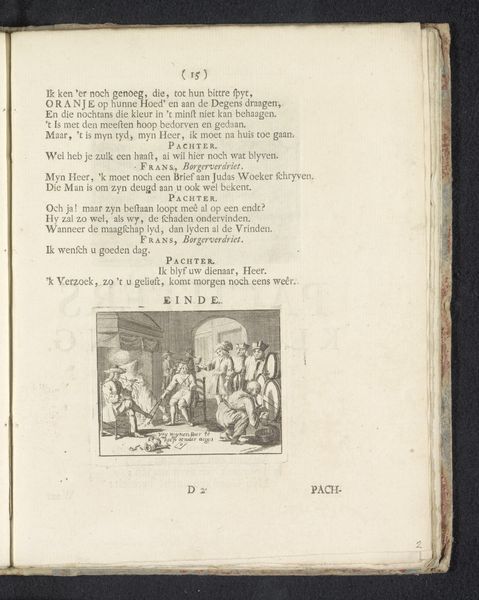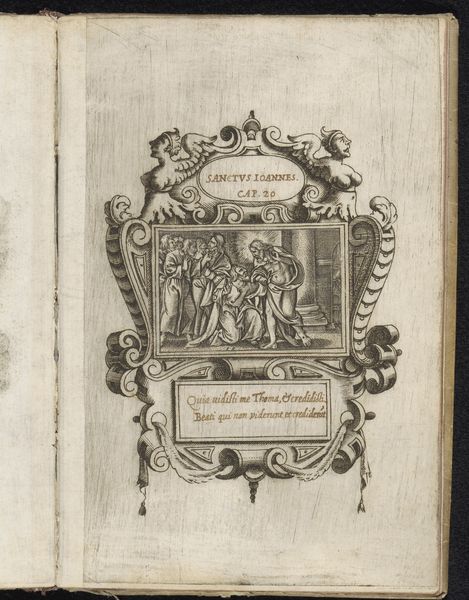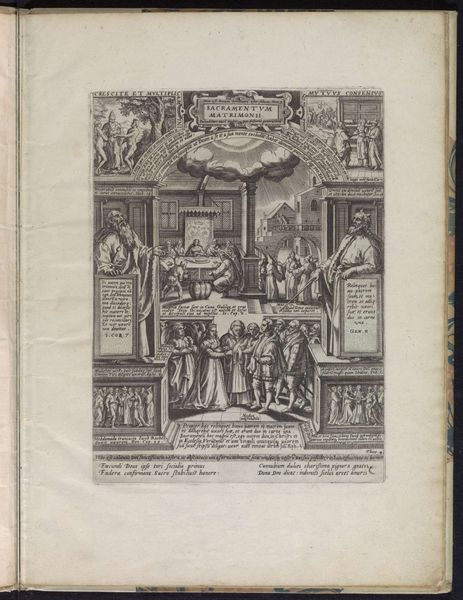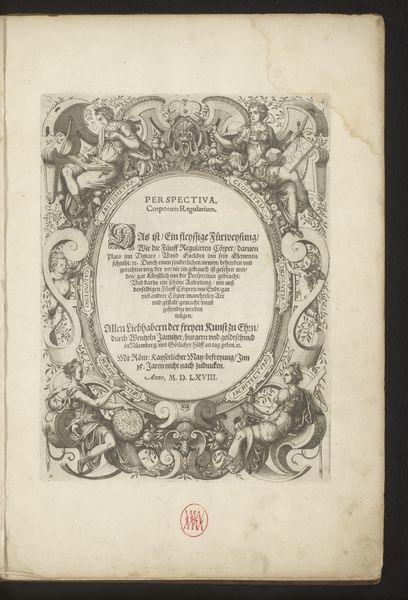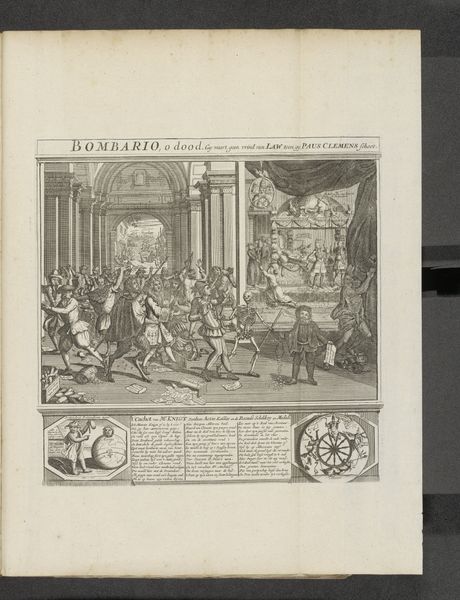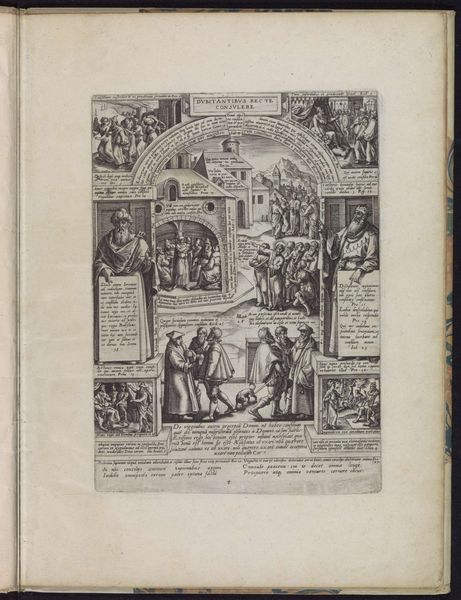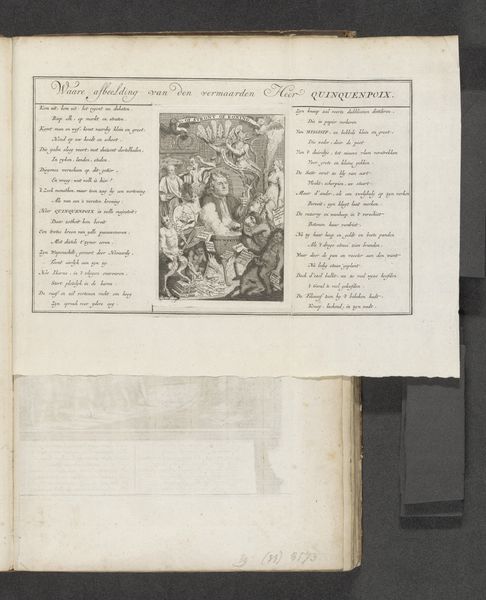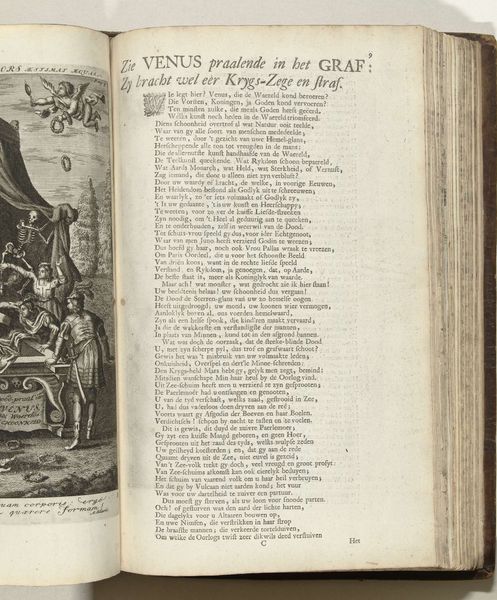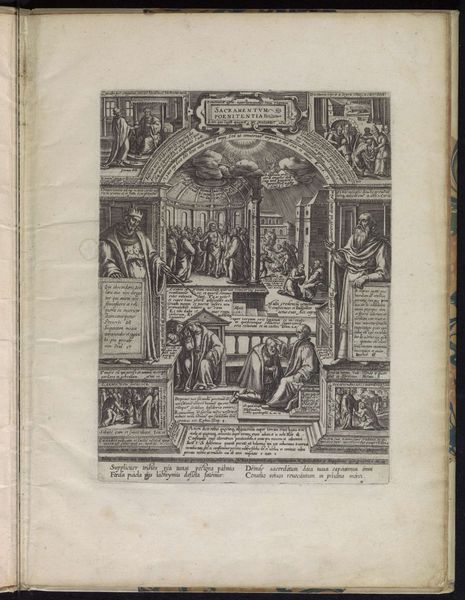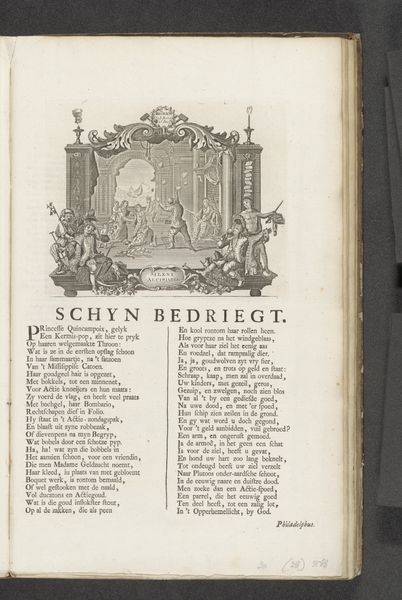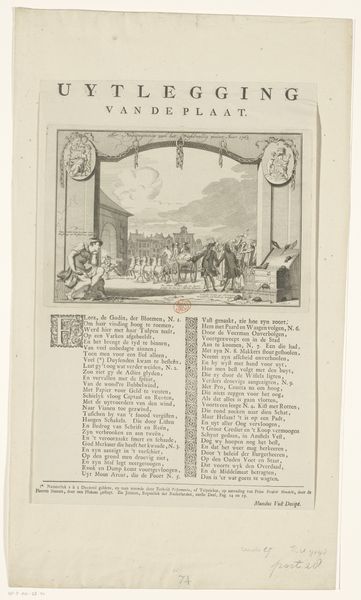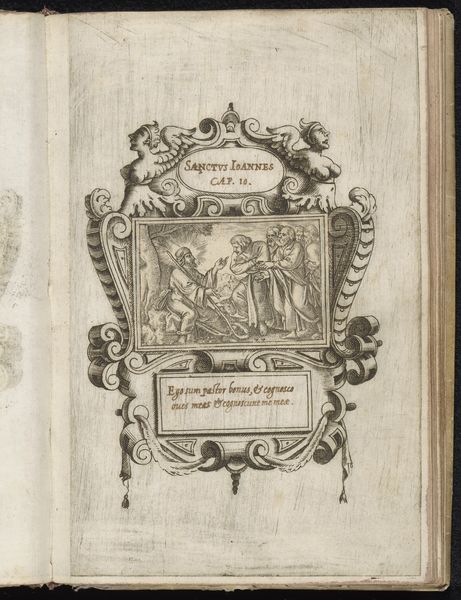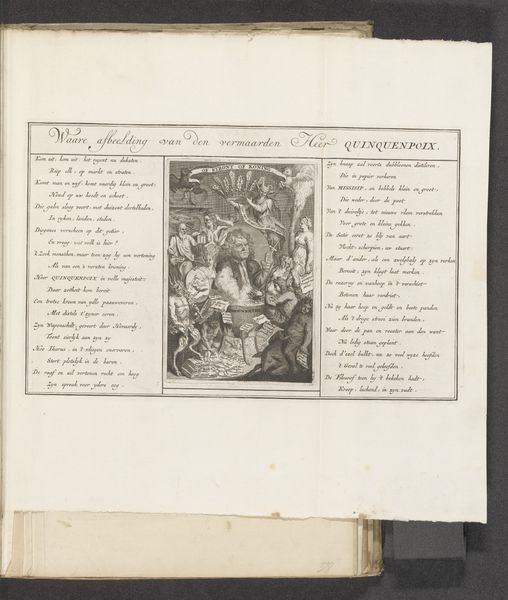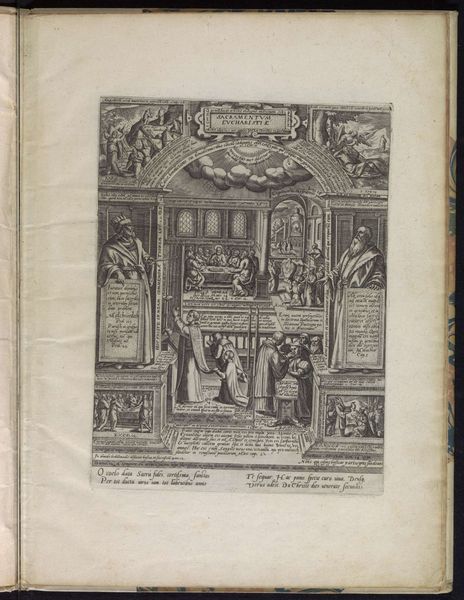
print, engraving
#
narrative-art
#
baroque
#
dutch-golden-age
# print
#
genre-painting
#
engraving
Dimensions: height 526 mm, width 447 mm
Copyright: Rijks Museum: Open Domain
Curator: This is a print titled "De oprechte en de geldzuchtige koopman" created around 1720. The piece comes to us from an anonymous Dutch artist, rendered with meticulous detail in engraving. Editor: My first impression is that this is quite theatrical! A complex allegorical scene presented almost as a stage play, with figures grandly gesturing. It feels weighty with symbolic meaning, but what strikes me most is its moralizing tone. Curator: Exactly! The artwork dives deep into the dichotomy between virtuous merchants and those consumed by greed, echoing a broader cultural sentiment from the Dutch Golden Age concerning wealth and ethical conduct. What sort of continuities with the modern day do you see represented by such symbols, or disruptions of this same culture? Editor: Well, trade, prosperity, and virtue are timeless and global concerns. I note that the piece makes little attempt to engage beyond the sphere of a specific time and people, beyond an admonition. Where are those affected by such economic realities and moral quandaries? The absence, to me, says as much about its cultural framework as the presence of its many signifiers of material prosperity. Curator: I see what you mean. The print also brings forth visual allegories of vices and virtues through symbolic figures, offering a guide for moral rectitude for the aspiring tradesman. Editor: It is interesting how the artist uses these traditional symbols to address the very contemporary issue of trade and ethics. The composition leads my eye in a deliberate path—from the chaotic throng of money-grubbers on one side to a more serene and ordered group guided by virtue on the other, driving home its message. It feels like the visual language seeks to imprint a sort of behavioral regulation in the viewer's mind. Curator: And to add on that notion, it really demonstrates how moral principles were envisioned as integral to even mundane daily activity, like business practices. I wonder what a modern rendering of that might even look like. Editor: The power of visual art to promote ethical reflection remains critical to creating inclusive futures that acknowledge the human cost behind all our cultural symbols of success. Curator: Indeed. As the saying goes, "A picture is worth a thousand words." Even prints from centuries ago hold so many conversations!
Comments
No comments
Be the first to comment and join the conversation on the ultimate creative platform.
